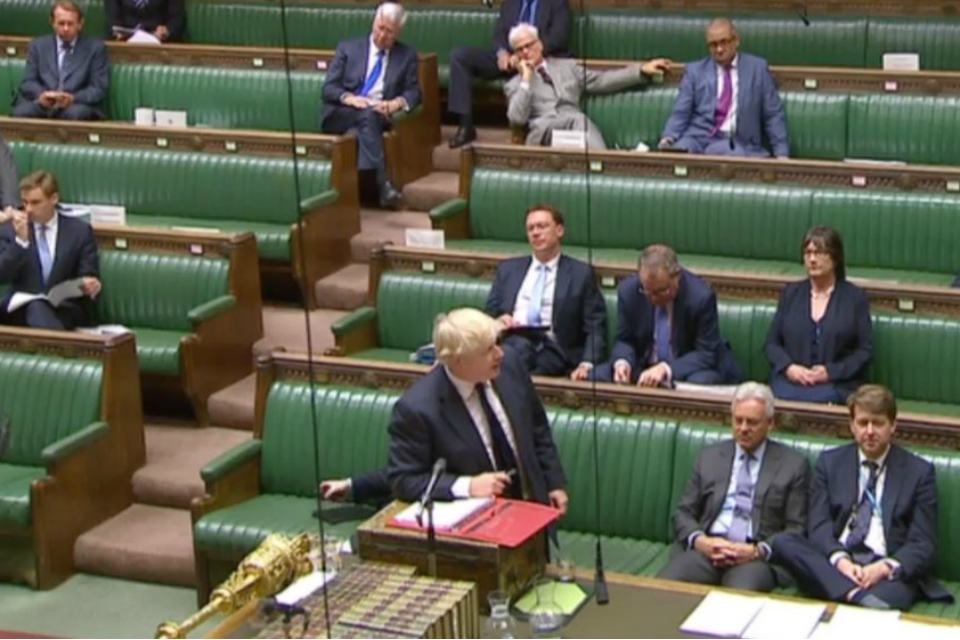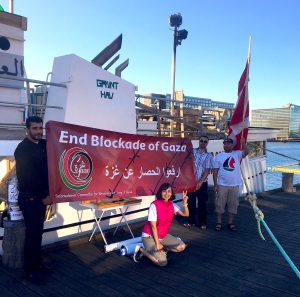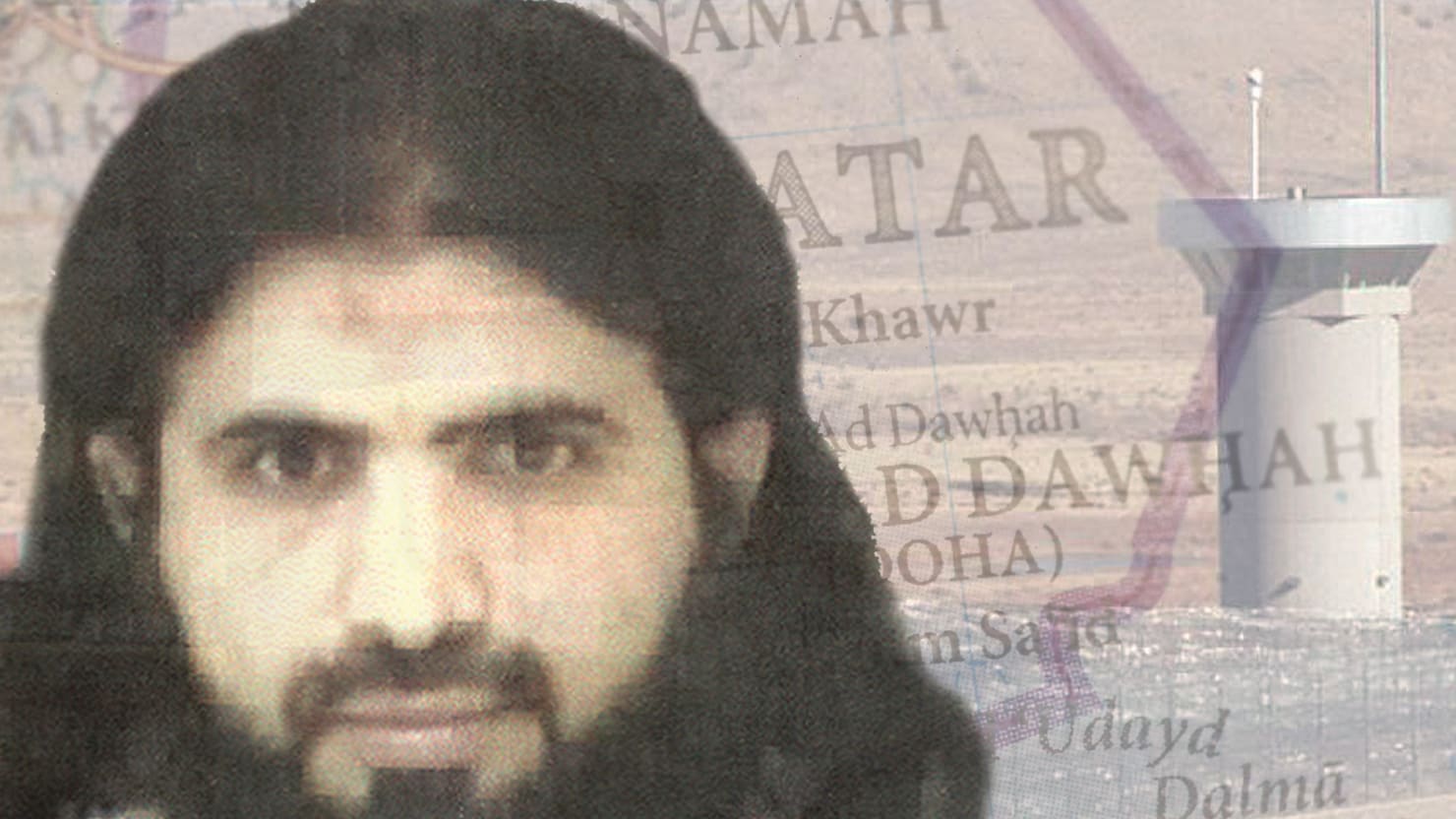We need to urgently cut carbon emissions and eventually cease greenhouse gas (GHG) pollution in coming decades. Ignored by Mainstream media is the need to drawdown atmospheric carbon dioxide (CO2) from the present dangerous and damaging 410 parts per million CO2 (410 ppm CO2) to a safe and sustainable 300 ppm CO2 i.e. negative GHG emissions. However a feasible, large-scale mechanisms for doing this, namely Direct Air Capture (DAC), is expensive, leaving future generations with an inescapable present Carbon Debt of about $130 trillion that is remorselessly increasing at about $10 trillion per year.
1. Required atmospheric CO2 drawdown to 300 ppm CO2.
The excellent climate activist organization 350.org, that was co-founded by American journalist Bill McKibben, demands a requisite CO2 draw-down to no more than 350 ppm CO2 that would roughly halve the Carbon Debt [1]. However scores of scientists and science-informed activists argue that a target of about 300 ppm CO2 is required for a safe and sustainable environment for all peoples and all species [2, 3], noting that before the Industrial Revolution the atmospheric CO2 had not exceeded 280 ppm CO2 in the last 800,000 years.
Thus, for example, 23 eminent coral scientists and biologists comprising the technical working group on coral of The Royal Society issued a report including following summation (2009):
“The Earth’s atmospheric CO2 level must be returned to <350ppm to reverse this escalating ecological crisis and to 320ppm to ensure permanent planetary health. Actions to achieve this must be taken urgently” [4].
Professor Ove Hoegh-Guldberg (leading coral scientist) (2009):
“We are already well above the safe levels for the world’s coral reefs. The proposed 450ppm/2 degree target is dangerous for the world’s corals and for the 500 million people who depend on them. We should not go there, not only for reasons of coral reefs, but for the many other impacts that are extremely likely. We deduce, from the history of coral bleaching, that the safe level for coral reefs is probably about 320 or 325ppm [CO2]” [5].
Professor James Hansen (leading climate scientist) and colleagues (2008):
“Stabilization of Arctic sea ice cover requires, to first approximation, restoration of planetary energy balance. Climate models driven by known forcings yield a present planetary energy imbalance of +0.5-1 W/m2. Observed heat increase in the upper 700 m of the ocean confirms the planetary energy imbalance, but observations of the entire ocean are needed for quantification. CO2 amount must be reduced to 325-355 ppm to increase outgoing flux 0.5-1 W/m2, if other forcings are unchanged. A further imbalance reduction, and thus CO2 ~300-325 ppm, may be needed to restore sea ice to its area of 25 years ago” [6].
Dr T. Goreau (Jamaica delegation climate change expert making a scientific and technical briefing to the Association of Small Island States, UN Climate Change Conference, Copenhagen, Denmark) (2009):
“The long-term sea level that corresponds to current CO2 concentration is about 23 meters above today’s levels, and the temperatures will be 6 degrees C higher. These estimates are based on real, long term climate records, not on models. We have not yet felt the real impacts of the current excess of greenhouse gases produced by fossil fuels, and the data shows that they will in the long run be many times higher than IPCC models project. In order to prevent these long term changes, CO2 must be stabilized at levels below preindustrial levels, around 260 parts per million. CO2 build up must be reversed, not allowed to increase or even to be stabilized at 350 ppm, which would amount to a death sentence for coral reefs, small island developing states, and billions of people living along low lying coast lines” [7].
Dr Andrew Glikson (an Earth and paleo-climate research scientist at Australian National University, Canberra, Australia) (2009):
“For some time now, climate scientists warned that melting of subpolar permafrost and warming of the Arctic Sea (up to 4 degrees C during 2005–2008 relative to the 1951–1980) are likely to result in the dissociation of methane hydrates and the release of this powerful greenhouse gas into the atmosphere (methane: 62 times the infrared warming effect of CO2 over 20 years and 21 times over 100 years) … The amount of carbon stored in Arctic sediments and permafrost is estimated as 500–2500 Gigaton Carbon (GtC), as compared with the world’s total fossil fuel reserves estimated as 5000 GtC. Compare with the 700 GtC of the atmosphere, which regulate CO2 levels in the range of 180–300 parts per million and land temperatures in a range of about – 50 to + 50 degrees C, which allowed the evolution of warm blooded mammals. The continuing use of the atmosphere as an open sewer for industrial pollution has already added some 305 GtC to the atmosphere together with land clearing and animal-emitted methane. This raised CO2 levels to 387 ppm CO2 to date, leading toward conditions which existed on Earth about 3 million years (Ma) ago (mid-Pliocene), when CO2 levels rose to about 400 ppm, temperatures to about 2–3 degrees C and sea levels by about 25 +/- 12 metres” [8].
Professor Hans Joachim Schellnhuber (director of the Potsdam Institute for Climate Impact Research., Germany) (2008):
“It is a compromise between ambition and feasibility. A rise of 2oC could avoid some of the big environmental disasters, but it is still only a compromise…It is a very sweeping argument, but nobody can say for sure that 330ppm is safe. Perhaps it will not matter whether we have 270ppm or 320ppm [CO2], but operating well outside the [historic] realm of carbon dioxide concentrations is risky as long as we have not fully understood the relevant feedback mechanisms” [280 ppm is the pre-industrial atmospheric CO2 concentration] [9].
David Spratt (leading Australian climate change analyst and activist on the website called “Climate Code Red”, the title of a key book by David Spratt and Phillip Sutton) (2009):
“The central point is that Arctic sea-ice is undergoing dramatic loss in summer, having lost 70-80% of its volume in the last 50 years, most since 2000. Without summer sea-ice, Greenland cannot escape a trajectory of ice-sheet loss leading to an eventual sea-level rise of 7 metres. Regional temperatures in the Arctic autumn are already up about 5C, and by mid-century an Arctic ice-free in summer, combined with more global warming, will be pushing Siberia close to the point where large-scale loss of carbon from melting permafrost would make further mitigation efforts futile. As Hansen told the US Congress in testimony last year, the “elements of a perfect storm, a global cataclysm, are assembled”. In short, if you don’t have a target that aims to cool the planet sufficiently to get the sea-ice back, the climate system may spiral out of control, past many “tipping points” to the final “point of no return”. And that target is not 350ppm, it’s around 300 ppm. Hansen says Arctic sea-ice passed its tipping point decades ago, and in his presentations has also specifically identified 300-325ppm as the target range for sea-ice” [10].
Shaye Wolf and Miyoko Sakashita (Center for Biological Diversity, San Francisco, California) (2009):
“Given the documented detrimental impacts to corals at the current atmospheric CO2 concentration of ~387 ppm CO2, the best-available science indicates that atmospheric CO2 concentrations must be reduced to at most 350 ppm, and perhaps much lower (300-325 ppm CO2), to adequately reduce the synergistic threats of ocean warming, ocean acidification, and other impacts” [11]
2. Record GHG emissions and biodiversity loss.
The world scientific community has been aware since the 1980s of the actual global warming impact of atmospheric greenhouse gases (GHGs) like carbon dioxide (CO2) and methane (CH4). This awareness and concern was translated into the formation of the Intergovernmental Panel on Climate Change (IPCC) by two United Nations organizations, the World Meteorological Organization (WMO) and the United Nations Environment Programme (UNEP) [12]. Atmospheric CO2 has been monitored at Mauna Loa, Hawaii, since 1958 and has now reached a record 410 ppm CO2 and was increasing at a maximum rate of 3 ppm CO2 per year in recent years [13-15]. The highest annual average atmospheric CO2 each year (it increases in the Northern winter and decreases in the Northern summer) has increased at an ever-increasing rate from 320 ppm CO2 in 1960 (increasing at 0.5 ppm CO2 per year) to 408 ppm CO2 in 2016 (increasing at 3.0 ppm CO2 per year). In 2017 the maximum CO2 at the Mauna Loa Observatory was 410 ppm CO2.
A neoliberal, profit-driven world in which Big Money determines politician and public perception of reality has been simply ignoring a quarter century of pleas for action from the world’s scientists. The present stupid, ignorant, populist, anti-science and neoliberal president of the US , Donald Trump, is guided by powerful climate change denialists and has busily set about reversing what little was achieved by his predecessor Barack Obama, most notably green-lighting fossil fuel exploitation and withdrawing America from the Paris Climate Change Agreement.
In 2017 over 15,000 scientists around the world signed a detailed statement that we are badly running out of time to save the Planet from over-exploitation, man-made global warming and massive biodiversity loss. This warning was backed by data on disastrous trajectories in 9 out of 10 key areas over the last 24 years, came 25 years after a similar warning by 1,700 scientists, coincided with the 2017 UN Climate Change Conference COP 23 in Bonn, and concluded “Time is running out” for action. Extrapolation from quasi-linear trajectories indicates a looming disaster in key areas, with man-made CO2 emissions increasing from 12.0 Gt (Gigatonnes or billion tonnes) CO2 per year in 1992 to 26.0 in 2016 to a projected 51.1 in 2040 [16, 17].
The Historical Carbon Debt (or Carbon Debt) of a country can be measured by the amount of greenhouse gas (GHG) it has introduced into the atmosphere since the start of the Industrial Revolution in the mid-18th century. Thus the total Carbon Debt of the world from 1751-2016 (including CO2 that gone into the consequentially acidifying oceans) is about 1,850 billion tonnes CO2. Assuming a damage-related Carbon Price of US$200 per tonne CO2-equivalent [18], this corresponds to a Carbon Debt of $370 trillion, similar to the total wealth of the world and about 4.5 times the world’s total annual GDP. The world has a Carbon Debt of $370 trillion that is increasing at $13 trillion per year [19], and Australia (among world leaders in fossil fuel exploitation and climate change inaction [20, 21]), has a Carbon Debt of $7.5 trillion (A$10 trillion) that is increasing at $400 billion (A$533 billion) per year and at $40,000 (A$53,000) per head per year for under-30 year old Australians [19].
CO2 is presently about 0.041% by volume of the atmosphere (equal to 410 parts per million CO2 or 400 ppm CO2) which corresponds to approximately 3,200 gigatonnes (Gt) of CO2 (the molecular weight of CO2 is 44 and the atomic weight of C is 12, and thus the atmospheric C = 3,200 Gt CO2 x (12 Gt C/44 Gt CO2) = 873 Gt of carbon (C)). Each part per million by volume (ppm) of CO2 in the atmosphere thus represents 3,200 Gt CO2/410 ppm CO2 = 7.8 Gt CO2 (2.13 Gt C) [22]. Lowering the atmospheric CO2 from the present 410 ppm CO2 to a requisite 300 ppm CO2 would mean removing 110 ppm CO2 x 7.8 Gt CO2 per ppm CO2 = 858 Gt CO2 i.e. a Carbon Debt of 858 Gt CO2. Assuming a damage-related Carbon Price of US$200 per tonne CO2-equivalent [18], this corresponds to a Carbon Debt of $172 trillion.
With atmospheric CO2 increasing at 3 ppm CO2 per year, the annual increase in Carbon Debt is 3 ppm CO2 x 7.8 Gt CO2 per ppm CO2 = 23.4 Gt CO2 or $4.7 trillion per year. However it gets worse. Thus World Bank analysts have revised annual GHG pollution by considering the contribution of methanogenic livestock production and attendant land use together with a Global Warming Potential of methane (CH4) that is 72 times that of CO2 on a horribly pertinent 20 year time frame as compared to 21 on a 100 year time scale (CH4 has a half-life in the atmosphere of 8 years as compared to 100 years for CO2). The World Bank revised estimate increases the annual GHG pollution from 41.8 Gt CO2-equivalent (CO2-e) to 63.8 Gt CO2-e [23], this latter figure corresponding to an annual increase in Carbon Debt of 63.8 Gt CO2-e x $200 per t CO2-e = $12.8 trillion or $1,701 each for every one of the present 7.5 billion human beings [24]. One notes that the world average GDP per capita is presently about $10,000 [25]. Further, the annual increase in global Carbon Debt of $12.8 trillion may be an under-estimate because the Global Warming Potential of CH4 on a 20 year time frame is 105 if atmospheric aerosol impacts are considered [26].
Unlike conventional debt that can be expunged by default, bankruptcy, or printing money, Carbon Debt is inescapable. Thus with a world facing a circa 1 metre sea level rise this century, coastal cities and populations will drown if sea walls are not built or the populations are not relocated to zones safe from sea surges due to warming-intensified storms. Carbon Debt involves immense climate criminality, intergenerational inequity and intergenerational injustice [27, 28]. If the young fully realized the awful extent of the worsening and inescapable Carbon Debt to be paid by future generations there would be a (hopefully non-violent) Climate Revolution [29].
The forgoing estimate of annual Carbon Debt increase does not take into account the cost of human lives lost to global warming impacts. Thus climate change is already killing an estimated 0.4 million people each year [30], although this may be a considerable under-estimate because climate change disproportionately impacts the tropical and sub-tropical Developing World in which 16 million people die avoidably from deprivation each year [31]. Indeed carbon fuel burning is associated with toxic air pollutants (notably fine carbon particulates and nitrogen oxides) that eventually kill about 7 million people each year [32]. Several leading climate scientists have estimated that only 0.5 billion people will survive this century if man-made climate change is not requisitely addressed, this predicting a Climate Genocide in which 10 billion people would perish this century at a average rate of 100 million per year [33].
The risk avoidance-based Value of a Statistical Life (VOSL) is about $9 million for Americans [34] and on the basis of “all men are created equal” could thus apply to all Humanity in an ideal world. On the basis of a $9 million per person VOSL, the annual cost of fossil fuel burning and/or global warming could be $3.6 trillion (0.4 million climate change-related deaths pa), $63 trillion (7 million pollution-related deaths pa), $144 trillion (16 million climate change-impacted global avoidable deaths from deprivation pa), and $900 trillion (adumbrated average of 100 million deaths pa from unaddressed climate change this century).
We have the extraordinary situation today of deadly Trump American inaction over a worsening climate emergency and a worsening climate genocide as compared to a commitment to a long-term accrual cost of $6 trillion for the endless War on Terror – yet there are 400,000 climate change-related deaths globally annually (climate terrorism victims) versus an average of 4 US deaths annually in America from political terrorism since 9-11. Similarly, since 9-11 there have been 3.3 million US air pollution deaths (carbon terrorism) versus 60 US political terrorism deaths in America [35, 36]. The 3.3 million US air pollution deaths since 9-11 from carbon fuel burning pollutants translates to a “wasted” risk avoidance-based cost of $30 trillion
The Carbon Debt transcends measurability when one considers the worsening desertification, salinization, deforestation, ocean resource depletion, speciescide, ecocide and omnicide associated with burgeoning human population and inextricably linked GHG pollution associated with increased urban industrial activity and agricultural methanogenic livestock-related land use.
According to biologists Drs Phillip Levin and Donald Levin (2002):
“Rates of extinction appear now to be 100 to 1,000 times greater than background levels, qualifying the present as an era of “mass extinction”” [37].
A letter signed by over 15,000 scientists in 2017 documented massive over-exploitation, man-made global warming and massive biodiversity loss, declaring that
“Moreover, we have unleashed a mass extinction event, the sixth in roughly 540 million years, wherein many current life forms could be annihilated or at least committed to extinction by the end of this century” [16].
We cannot destroy what we cannot replace. In 2017 a Leonardo Da Vinci painting sold at auction for $450 million but a same-size faithful reproduction of this work could be generated for a mere few dollars. In contrast, any species is essentially priceless – it cannot be reproduced once it has been rendered extinct. Attempts have been made to quantify the economic value of the Biosphere. Thus Costanza et al. (1997) estimated the aggregated annual value of nature’s services (updated to 2000 US $) to lie in the range $18 – $61 trillion [38, 39]. Dr Andrew Balmford et al. (2002) estimated that “our current undervaluation of nature is reflected in marked underinvestment in reserves. To the best of our knowledge the world spends (in 2000 US $) ~ $6.5 billion each year on the existing reserve network… the total cost of an effective, global reserve programme on land and at sea is some $45 billion per year. This sum dwarfs the current $6.5 billion annual reserve budget yet could be readily met by redirecting less than 5% of existing perverse subsidies… our hypothetical global reserve network would ensure the delivery of goods and services with an annual value (net of benefits from conversion) of between ~ $4400 and $5200 billion [$4.4-$5.2 trillion pa], depending on the level of resource use permitted within protected areas, and with the lower number coming from a network entirely composed of strictly protected reserves… The benefit : cost ratio of a reserve system meeting minimum safe standards is therefore around 100 : 1” [38].
3. Unavoidable catastrophic plus 2C and the near-terminal Methane Bomb.
The global warming trajectory gets even worse still if one considers the Methane Bomb of the Arctic tundra and Arctic Ocean sea bed [40-45]. The Global Warming Potential (GWP) of CH4 is 21 times that of CO2 on a 100 year time frame but is 105 times greater than that of CO2 on a 20 year time frame and taking atmospheric aerosol impacts into account [26]. Huge stores of CH4 as water-methane (H2O-CH4) clathrates in the Arctic tundra permafrost and on the Arctic Ocean sea bed may be released in coming decades due to global warming, with this release involving a disastrous positive feedback loop in which global warming causes CH4 release, thence more global warming and consequently even more CH4 release. Atmospheric CH4 increased in 1983-1998 by up to 13 ppb (parts per billion) per year, increased much more slowly in the period 1999-2006 (up to 3 ppb per year, the 2001-2005 average being 0.5 ppb/year), and has increased more rapidly from 2007 onwards, reaching 12.5 ppb per year in 2014. Atmospheric CH4 increased to 1,843 ppb CH4 in December 2015 [41] as compared to a pre-Industrial Revolution level of 700 ppb CH4 [15].
Professor Peter Wadhams (professor of Ocean Physics, and Head of the Polar Ocean Physics Group in the Department of Applied Mathematics and Theoretical Physics, 90-Nobel-Laureate University of Cambridge, UK) and colleagues on the threat of 50Gt methane from East Siberian Arctic Shelf (2013):
“Economic time bomb. As the amount of Arctic sea ice declines at an unprecedented rate, the thawing of offshore permafrost releases methane. A 50-gigatonne (Gt) reservoir of methane, stored in the form of hydrates, exists on the East Siberian Arctic Shelf. It is likely to be emitted as the seabed warms, either steadily over 50 years or suddenly” [42].
However the Global Warming Potential (GWP) of CH4 on a 20 year time frame and with aerosol impacts considered is 105 times that of CO2 [26] . The German WBGU (2009) and the Australian Climate Commission (2013) have estimated that no more than a Terminal Carbon Pollution Budget of 600 billion tonnes of CO2 can be emitted between 2010 and zero emissions in 2050 if the world is to have a 75% chance of avoiding a catastrophic 2C temperature rise [46, 47]. That Terminal Carbon Pollution Budget has now effectively been exceeded [48]. Indeed climate criminal Australia’s commitment to fossil fuel exploitation means that Australia is set to exceed the world’s 2009 Terminal Carbon Pollution Budget by a factor of 3 [49]. However the 50 Gt (billion tonnes) CH4 in the East Siberian Arctic Shelf is thus equivalent to 50 billion tonnes CH4 x 105 tonnes CO2-equivalent/tonne CH4 = 5,250 billion tonnes CO2-e or about nine (9) times more than the world’s remaining Terminal Carbon Pollution Budget in 2009. We are doomed unless we can stop this Arctic CH4 release.
4. The cost of Direct Air Capture, Biochar & other CO2 drawdown systems.
(A) Direct Air Capture (DAC)
The Direct Air Capture (DAC) system captures as water-insoluble calcium carbonate (CaCO3) all the CO2 in the incoming air stream (circa 80% nitrogen, N2; 20% oxygen, O2; 0.04% CO2) by passage through a lime solution of calcium ions (Ca2+ ) and hydroxyl ions (OH– ) . The calcium carbonate is then heated to generate lime (calcium oxide, CaO) and a stream of circa 100% carbon dioxide (CO2) which can then be compressed and hopefully permanently sequestered [50](e.g. in deep ocean, in underground in spaces from former coal or gas extraction or by underground reactions to form carbonates with basalt rocks) [50]. Note that in chemistry carbon dioxide is denoted as CO2 but for convenience I have used CO2 elsewhere in this essay except for chemical equations such as those below summarizing the key steps of DAC:
- (a) CO2 (CO2) scrubbed out of air by passage through lime solution (Ca2+ + 2 OH– ) in water (H2O) to form carbonate ions (CO32-): CO2 + 2OH– -> CO32- + H2O
- (b) Carbonate (CO32- ) precipitated as calcium carbonate (CaCO3 ): Ca2+ + CO32- -> CaCO3
- (c) Lime (calcium oxide, CaO) regenerated by heating calcium carbonate (CaCO3) with the resultant CO2 being sequestered : CaCO3 -> CaO + CO2 -> CO2 sequestered.
- (d) Lime (CaO) dissolved in water (H2O): CaO + H2O -> Ca2+ + 2 OH– .
A pilot plant has been constructed that sequesters 1 Mt CO2 per year (equivalent to annual emissions of 250,000 average cars) at a cost of $100-150 per tonne of CO2 captured, purified, and compressed to 150 bar [50]. To get the atmospheric CO2 back to 300 ppm CO2 from the present 410 ppm CO2 we would have to lower the atmospheric CO2 by 110 ppm CO2 by removing 3,200 Gt CO2 x (110/410) = 859 Gt CO2 (234 Gt C). Doing sequestration of 859 Gt CO2 by DAC at $100 per tonne of CO2 sequestered would cost 859 Gt CO2 x $100/ t CO2 = 85,900 billion = $85.9 trillion but at $150 per tonne of CO2 sequestered it would cost $128.9 trillion (one notes that at a damage –related carbon price of $200 /tonne CO2-e [18 ] getting back to 300 ppm CO2 would cost 859 Gt CO2 x $200 /t CO2-e = $171.8 trillion).
Burning thermal coal on average yields 2.129 tonnes CO2 per tonne coal (2.622 tonnes CO2 per tonne anthracite coal) [54] . In April 2018 the present price of coal is US$94.21 per tonne coal but the price has been in the range $50-100 per tonne coal in the period 2014-2018. At $100 per tonne of coal, the Carbon Price in US dollars per tonne CO2 is accordingly $100 per tonne coal x (tonne coal/2.129 t CO2 = $47.0/t CO2 or about 3 times less than the upper estimate of DAC-based CO2 sequestration of $150 per tonne of CO2 sequestered.
Thus at a coal price of $100 per tonne coal, for every $1 received for coal leading to coal-based CO2 pollution it will cost future generations $3 to sequester the CO2. If the coal price is $50 per tonne, for every $1 received for coal-based CO2 pollution it will cost future generations $6.4 in today’s dollars to sequester the CO2. Indeed the coal price is set to fall until it reaches zero when coal mining is banned in a world that finally comes to its senses.
(B) Biochar Carbon, C, charcoal
One could envisage a sane world building sufficient DAC plants to get us back to 300 ppm CO2 (by removing 859 Gt CO2 from the atmosphere) within a decade at a cost of $9-13 trillion dollars per year. However a nicer approach would be to get rid of atmospheric CO2 by O2 (oxygen)-yielding photosynthetic capture of CO2 as cellulose or related insoluble polysaccharides (CH2O)n) and thence converting such cellulosic material to Biochar (carbon, C) by heating in anaerobic conditions to circa 700C (anaerobic pyrolysis):
- (a) fixing CO2 as cellulose via solar-energy-driven photosynthesis: nCO2 + nH2O -> (CH2O)n + O2
- (b) anaerobic pyrolysis of waste wood and straw ((CH2O)n) to yield carbon (C, charcoal, Biochar): (CH2O)n -> nC + n H2O.
The Biochar (carbon, C, charcoal ) can then be buried in fire-proof holes in the ground (old coal mines) or added to soil (the Amazonian Indians discovered that Biochar – charcoal or “terra preta” – was an agriculturally very beneficial additive to soil [56]. Without diverting arable land to Biochar production, we could presently obtain about 12 Gt of cellulosic carbon each year from the following sources: 1.7 GtC/yr (straw from agriculture) + 4.2 GtC/yr (total grass upgrowth from grasslands upgrowth) + 6 GtC/yr (possible sustainable wood harvest) = 11.9 GtC/yr [57]. From this one can see why Biochar expert Professor Johannes Lehmann of Cornell University was correct in calculating that it is realistically possible to fix 9.5Gt C (34.9 Gt CO2) per year as Biochar, noting that global annual production of carbon from burning fossil fuels is about 9GtC (33.0 Gt CO2)[58, 59].
In order to get back to 300 ppm CO2 we would need to remove 859 Gt CO2 (234 Gt C), and at 9.5 Gt C per year this would take 234 Gt C x (year/ 9.5 Gt C) = 24.6 years. However a realistic assessment is that carbon sequestration as Biochar could amount to only 2.2 GtC annually by 2050 [60] and at this rate it would take 234 Gt C x (year/ 2.2 Gt C) = 106 years to draw down CO2 to 300 ppm CO2.
A further crucial question here is how much does it cost to produce Biochar? Based on biomass from sustainable forest, non-farm and ranch-based feedstock production, the total cost of Biochar is $194- $424 per ton of cellulosic ((CH2O)n ) feedstock and every 30 t cellulose feedstock generates 12 t Biochar (C ). Accordingly the cost of Biochar is $194-$424 per t cellulose x (30 t cellulose/ 12 t C) = $485- $1,060/t C or $485- $1,060/t C x (12 t C/ 44 t CO2) = $132-$289 /t CO2.
At $100 per tonne of coal, the Carbon Price in US dollars per tonne CO2 is accordingly $100 per tonne coal x (tonne coal/2.129 t CO2 = $47.0/t CO2 i.e. about 2.8-6.1 times or roughly 3-6 times less than the cost of removing the CO2 as Biochar. A coal price of $50 per tonne corresponds to $23.5/t CO2 which is 6-12 times less than the cost of removing the CO2 as Biochar.
(C) Accelerated Weathering of Limestone (AWL)
The waste gas from burning coal or gas is passed through a sea water-limestone (CaCO3) scrubber to generate bicarbonate ions (HCO3 –): CO2 (gas) + CaCO3 (solid) + H2O <-> Ca2+ (aqueous) + 2 HCO3 –(aqueous) . The scrubbing solution is then piped to the sea [62-66]. Carbon in the oceans as bicarbonate is 10 times that in all recoverable fossil fuel reserves and about 60 times that in the CO2 in the atmosphere. The carbon in carbonate minerals is about 4,000 times greater than the carbon in oil and coal fossil fuel reserves and the AWL process would in part reverse the deleterious acidification of the oceans due to the massive CO2 pollution of the atmosphere [15].
The main problems with the AWL system are that ideally it would involve CO2-producing cement factories and fossil fuel-based power stations (which we want to abolish) being located adjacent to the sea and limestone deposits (so that the CO2-rich flue gas could be passed through limestone suspensions in sea water (but can you imagine the British demolishing the iconic White Cliffs of Dover and Eastbourne?)
G.H. Rau has proposed an electrochemically accelerated version of such sequestration:
“Electrochemical splitting of calcium carbonate (e.g., as contained in limestone or other minerals) is explored as a means of forming dissolve hydroxides for absorbing, neutralizing, and storing carbon dioxide, and for restoring, preserving, or enhancing ocean calcification. While essentially insoluble in water, CaCO3 can be dissolved in the presence of the highly acidic anolyte of a water electrolysis cell. The resulting charged constituents, Ca2+ and C03(2-), migrate to the cathode and anode, respectively, forming Ca(OH)2 on the one hand and H2CO3 (or H2O and CO2) on the other. By maintaining a pH between 6 and 9, subsequent hydroxide reactions with CO2 primarily produce dissolved calcium bicarbonate, Ca(HCO3)2aq. Thus, for each mole of CaCO3 split there can be a net capture of up to 1 mol of CO2. Ca(HCO3)2aq is thus the carbon sequestrant that can be diluted and stored in the ocean, in natural or artificial surface water reservoirs, or underground. The theoretical work requirement for the reaction is 266 kJe per net mole CO2 consumed. Even with inefficiencies, a realized net energy expenditure lower than the preceding quantity appears possible considering energy recovery via oxidation of the H2 produced. The net process cost is estimated to be <$100/tonne CO2 mitigated. An experimental demonstration of the concept is presented, and further implementation issues are discussed” [66].
Setting aside the limitations of this proposed AWL technology (it would be most effective when associated with coastally-located cement plants or coal- or gas-burning power stations, polluting plants that we want to eliminate), a cost of $100 per tonne CO2 sequestered by AWL would mean that for every tonne of CO2 thus sequestered as bicarbonate, at $100 per tonne of coal the cost would be $100 per tonne CO2 sequestered/$47.0 per tonne CO2 generated = 2.1 times the amount received for the coal generating that tonne of CO2 on combustion. At a coal price of $50 per tonne, the cost would be $100 per tonne CO2 sequestered/$23.5 per tonne CO2 generated = 4.3 times the amount paid for the coal. Accordingly, the cost of removing CO2 by AWL is 2.1-4.3 times greater than the price received by climate criminals for the thermal coal.
(D) Mineral carbonation
Mineral carbonation involves reaction of CO2 with minerals using wollastonite (CaSiO3) or steel slag as feedstock. W.J.J Huijgen et al.:
“A cost evaluation of CO2 sequestration by aqueous mineral carbonation has been made using either wollastonite (CaSiO3) or steel slag as feedstock. First, the process was simulated to determine the properties of the streams as well as the power and heat consumption of the process equipment. Second, a basic design was made for the major process equipment, and total investment costs were estimated with the help of the publicly available literature and a factorial cost estimation method. Finally, the sequestration costs were determined on the basis of the depreciation of investments and variable and fixed operating costs. Estimated costs are 102 and 77 €/ton CO2 [$111 and $84] net avoided for wollastonite and steel slag, respectively. For wollastonite, the major costs are associated with the feedstock and the electricity consumption for grinding and compression (54 and 26 €/ton CO2 [$59 and $28] avoided, respectively). A sensitivity analysis showed that additional influential parameters in the sequestration costs include the liquid-to-solid ratio in the carbonation reactor and the possible value of the carbonated product. The sequestration costs for steel slag are significantly lower due to the absence of costs for the feedstock. Although various options for potential cost reduction have been identified, CO2 sequestration by current aqueous carbonation processes seems expensive relative to other CO2 storage technologies. The permanent and inherently safe sequestration of CO2by mineral carbonation may justify higher costs, but further cost reductions are required, particularly in view of (current) prices of CO2 emission rights. Niche applications of mineral carbonation with a solid residue such as steel slag as feedstock and/or a useful carbonated product hold the best prospects for an economically feasible CO2 sequestration process” [67].
Setting aside the large-scale feasibility of this mineral carbonation technology, an IPCC Report estimates the cost of mineral carbonation at $50-$100 per tonne CO2 sequestered [17]. At a coal price of $50 per tonne, that would mean that for every tonne of CO2 thus sequestered as magnesium carbonate , the cost would be $50-$100 per tonne CO2 / $47.0/t CO2 = 1.1- 2.1 times the amount received for the coal generating that tonne of CO2 on combustion i.e. for every $1 received for coal about $1.1- $2.1 would have to be paid for subsequent CO2 removal through mineral carbonation. At a coal price of $100 per tonne, the cost of CO2 removal would be $50-$100 per tonne CO2 / $23.5/t CO2 = 2.1-4.3 times the mine gate receipt for the coal
(E) Carbon Capture and Sequestration (CCS)
Carbon Capture and Storage (CCS) involves concentrating CO2 as a liquid , piping it to a suitable location and then storing it underground or at the bottom of the ocean [68-71]. The economic and practical difficulties of CCS mean that it has yet to be applied on a large scale. The IPCC reports that the cost of such capture from a coal- or gas-fired power station would be up to $75 per tonne CO2 sequestered [68] . The Global CCS Institute states (2011):
“The cost of mitigating, or avoiding, CO2emissions for a coal power plant fitted with current CCS technology ranges from US$23-92 per tonne of CO2 and is a little higher for natural gas fuelled power plants” [70].
For coal burning–based power plants the cost of CCS is $35-$83 per tonne CO2 sequestered [71]. At a mine gate coal price of $100 per tonne, the cost of CO2 removal by CCS would be $35-$83 per tonne CO2 / $47.0/t CO2 = 0.7-1.8.times the amount received for the coal generating that tonne of CO2 on combustion i.e. for every $1 received for coal about $0.7- $1.8 would have to be paid for subsequent CO2 removal. At a mine gate coal price of $50 per tonne, the cost of CO2 removal by CCS would be $35-$83 per tonne CO2 / $23.5/t CO2 = 1.5-3.5 times the amount received for the coal generating that tonne of CO2 on combustion.
(F) Photosynthesis-based CO2 sequestration via re-afforestation and fertilizing the oceans
After centuries of de-forestation, net loss of forests has ceased in North America and Europe but continues apace at 7.3 million hectares per year in Latin America, the Developing World and Australia [72]. Thus rich, climate criminal Australia is not only among world leaders in terms of per capita greenhouse gas pollution [20, 21] and climate change inaction (ranking 57 out of 60 countries on a climate change performance index) [73], but it also ranks with Brazil among world leaders in land clearance) [74, 75]. Paradoxically, the South East Australian native Eucalyptus forests are World’s best forest carbon sinks – 14 million hectares, 25.5 Gt CO2, and a loss of 460 Mt CO2/year avoided for next 100 years if retained [76]. Re-afforestation, while desirable, would come at the expense of arable land in a hungry world that is suffering remorseless population increase in the face of loss of arable land through urbanization, desertification, salinization and global warming-driven sea level rise.
Fertilization of the oceans to promote the growth of photosynthetic algae has been proposed as a geoengineering solution to rising atmospheric CO2 [77-81]. However CO2 could be released from dead plankton through oxidation rather than evading the carbon cycle and falling out of circulation to the ocean bottom. Further, it has been surmised that blooming algae could actually promote warming of the Arctic [81]. And of course if the remorselessly destructive continuation of the circa 10,000 year-old Anthropocene Era has taught us anything it is that gross interference with ecosystems that have evolved over millions of years is very likely to be catastrophically and indeed terminally destructive of ecosystems and species.
Final comments and conclusions
A catastrophic plus 2C temperature rise is now unavoidable but decent people are obliged to do everything they can to make the future “less bad” for their children, grandchildren and for future generations. Arrayed against the young is the sustained mendacity of the neoliberal One Percenters who possess 50% of the world’s wealth. While buffoons like Donald Trump can bluster absurd and dangerous climate change denialism, a more insidious neoliberal agenda has been promotion of the dangerous “coal to gas transition” favoured by his predecessor Barack Obama. Methane (CH4) (about 85% of natural gas) has a Global Warming Potential (GWP) that is 105 times greater than that of CO2 on a 20 year time frame and taking aerosol impacts into account. Methane leaks (3.3% in the US based on the latest US EPA data and as high as 7.9% for methane from “fracking” coal seams) and thus a 2.6 % leakage of CH4 yields the same greenhouse effect as burning the remaining 97.4% CH4. Accordingly, depending upon the degree of systemic gas leakage, gas burning for electricity could be much dirtier than coal burning greenhouse gas-wise (GHG-wise) [43, 82].
In addition to urgent cessation of carbon fuel burning, there must be “negative CO2 emissions” to drawdown atmospheric CO2 to a safe and sustainable level of about 300 ppm CO2 from the present damaging and dangerous 410 ppm CO2. Of the 6 systems analysed here, Direct Air Capture (DAC) and Biochar are the most feasible. However a realistic assessment is that carbon sequestration as Biochar could amount to only 2.2 GtC annually by 2050 [60] and at this rate it would take 106 years to drawdown atmospheric CO2 to 300 ppm CO2.
The upper cost estimate for DAC is $150 per tonne CO2 sequestered but a coal price of $50 per tonne means $23.5 per tonne CO2 produced on combustion – thus on this basis, for every $1 paid for coal today, future generations will have to pay 6.4 times that amount in today’s dollars to sequester the CO2 by DAC. This represents unconscionable intergenerational theft and intergenerational injustice through imposed Carbon Debt that the young should simply not tolerate [27-29, 83]. Unlike conventional debt that be variously evaded by default, bankruptcy or printing money, Carbon Debt is inescapable – if the sea wall is not built the city will drown.
Young people and those who care for them must (a) inform everyone they can, (b) demand rapid cessation of carbon fuel burning, (c) demand rapid atmospheric CO2 drawdown to a safe and sustainable 300 ppm CO2, and (d) urge and apply Boycotts, Divestment and Sanctions (BDS) against all those people, politicians , parties, companies, corporations and countries disproportionately complicit in the worsening Climate Emergency and Climate Crisis. There is no Planet B.
*
This article was originally published on Countercurrents.
Dr Gideon Polya taught science students at a major Australian university for 4 decades. He published some 130 works in a 5 decade scientific career, most recently a huge pharmacological reference text “Biochemical Targets of Plant Bioactive Compounds” (CRC Press/Taylor & Francis, New York & London , 2003).
Sources
[1]. 350.org: https://350.org/ .
[2]. 300.org: https://sites.google.com/site/300orgsite/300-org .
[3]. “300.org – return atmosphere CO2 to 300 ppm CO2”: https://sites.google.com/site/300orgsite/300-org—return-atmosphere-co2-to-300-ppm .
[4]. Professor John Veron (Coral Reef Research) Dr Mary Stafford-Smith (Coral Reef Research), Prof. Ove Hoegh-Guldberg (University of Queensland) and 20 other eminent scientists including Sir David Attenborough FRS (working group co-chair) , Output of the technical working group meeting, The Royal Society, London, 6th July, 2009, “The Coral Reef Crisis: scientific justification for critical CO2 threshold levels of <350ppm”: http://www.carbonequity.info/PDFs/The-Coral-Reef-Crisis.pdf .
[5]. Professor Ove Hoegh-Guldberg quoted in “Scientists call for urgent “global cooling” to save coral reefs”, University of Queensland News, 8 November 2009: https://www.uq.edu.au/news/article/2009/11/scientists-call-urgent-global-cooling-save-coral-reefs
[6]. Hansen, J., Mki. Sato, P. Kharecha, D. Beerling, R. Berner, V. Masson-Delmotte, M. Pagani, M. Raymo, D.L. Royer, and J.C. Zachos, 2008: Target atmospheric CO2: Where should humanity aim? Open Atmos. Sci. J., 2, 217-231: http://pubs.giss.nasa.gov/abstracts/2008/Hansen_etal.html (abstract) and http://pubs.giss.nasa.gov/docs/2008/2008_Hansen_etal.pdf .
[7]. Dr T. Goreau, “What is the right target for CO2? 350 ppm is a death sentence for coral reefs and low lying islands, the safe level for SIDS [Small Island Developing States] is around 260 parts per million [ppm]”, scientific and technical briefing to the Association of Small Island States, UN Climate Change Conference, Copenhagen, Denmark, December 7-18, 2009: http://www.globalcoral.org/wpcontent/uploads/2014/01/aosis_briefing_2009.pdf .
[8]. Andrew Glikson, “The Methane Time Bomb and the Triple Melt-down”, Countercurrents, 2009 : http://www.countercurrents.org/glikson101008.htm .
[9]. Professor Hans Joachim Schellnhuber quoted by David Adam, “Roll back time to safeguard climate, expert warns”, Guardian, 15 September 2008 : http://www.guardian.co.uk/environment/2008/sep/15/climatechange.carbonemissions .
[10]. David Spratt, “350 is the wrong target: put the science first”, Climate Code Red website, 22 January 2009: http://www.climatecodered.org/2009_01_01_archive.html .
[11]. Miyoko Sakashita and Shaye Wolf (Center for Biological Diversity, San Francisco, California), “Before the Secretary of Commerce. Petition to list 83 coral species under the Endangered Species Act”, 20 October 2009: http://www.fisheries.noaa.gov/pr/species/petitions/83_corals_petition_2009.pdf .
[12]. “Intergovernmental Panel on Climate Change”, Wikipedia: https://en.wikipedia.org/wiki/Intergovernmental_Panel_on_Climate_Change .
[13]. US National Oceanic and Atmospheric Administration (NOAA), Trends in Atmospheric Carbon Dioxide, “Full Mauna Loa CO2 record”: https://www.esrl.noaa.gov/gmd/ccgg/trends/full.html .
[14]. US National Oceanic and Atmospheric Administration (NOAA), Trends in Atmospheric Carbon Dioxide, “Annual mean growth rate for Mauna Loa, Hawaii”: https://www.esrl.noaa.gov/gmd/ccgg/trends/gr.html .
[15]. “2011 climate change course”: https://sites.google.com/site/300orgsite/2011-climate-change-course .
[16]. William J. Ripple et al., 15,364 signatories from 184 countries, “World scientists’ warning to Humanity: a second notice”, Bioscience, 13 November 2017: https://academic.oup.com/bioscience/advance-article/doi/10.1093/biosci/bix125/4605229 .
[17]. Gideon Polya, “Over 15,000 scientists issue dire warning to Humanity on catastrophic climate change and biodiversity loss”, Countercurrents, 20 November 2017: https://countercurrents.org/2017/11/20/over-15000-scientists-issue-dire-warning-to-humanity-on-catastrophic-climate-change-and-biodiversity-loss/ .
[18]. Chris Hope, “How high should climate change taxes be?”, Working Paper Series, Judge Business School, University of Cambridge, 9.2011: http://www.jbs.cam.ac.uk/fileadmin/user_upload/research/workingpapers/wp1109.pdf .
[19]. “Carbon Debt Carbon Credit”: https://sites.google.com/site/carbondebtcarboncredit/ .
[20]. Gideon Polya, “Revised Annual Per Capita Greenhouse Gas Pollution For All Countries – What Is Your Country Doing?”, Countercurrents, 6 January, 2016: https://countercurrents.org/polya060116.htm .
[21]. Gideon Polya, “Exposing And Thence Punishing Worst Polluter Nations Via Weighted Annual Per Capita Greenhouse Gas Pollution Scores”, Countercurrents, 19 March, 2016: https://countercurrents.org/polya190316.htm .
[22]. “Carbon dioxide in Earth’s atmosphere” , Wikipedia: https://en.wikipedia.org/wiki/Carbon_dioxide_in_Earth%27s_atmosphere .
[23]. Robert Goodland and Jeff Anfang. “Livestock and climate change. What if the key actors in climate change are … cows, pigs and chickens?”, World Watch, November/December 2009: http://www.worldwatch.org/files/pdf/Livestock%20and%20Climate%20Change.pdf .
[24]. UN Population Division, 2017 Revision of World Population Prospects”: https://esa.un.org/unpd/wpp/ .
[25]. “List of countries by GDP (nominal) per capita”, Wikipedia: https://en.wikipedia.org/wiki/List_of_countries_by_GDP_(nominal)_per_capita .
[26]. Drew T. Shindell , Greg Faluvegi, Dorothy M. Koch , Gavin A. Schmidt , Nadine Unger and Susanne E. Bauer , “Improved Attribution of Climate Forcing to Emissions”, Science, 30 October 2009: Vol. 326 no. 5953 pp. 716-718: http://www.sciencemag.org/content/326/5953/716 .
[27]. “Climate Justice & Intergenerational Equity”: https://sites.google.com/site/300orgsite/climate-justice .
[28]. “Stop climate crime”: https://sites.google.com/site/300orgsite/stop-climate-crime .
[29]. “Climate Revolution Now”: https://sites.google.com/site/300orgsite/climate-revolution .
[30]. DARA, “Climate Vulnerability Monitor. A guide to the cold calculus of a hot planet”, 2012, Executive Summary pp2-3: http://daraint.org/climate-vulnerability-monitor/climate-vulnerability-monitor-2012/ .
[31]. Gideon Polya, “Body Count. Global avoidable mortality since 1950”, that includes a succinct history of every country and is now available for free perusal on the web: http://globalbodycount.blogspot.com/ .
[32]. “Stop air pollution deaths”: https://sites.google.com/site/300orgsite/stop-air-pollution-deaths .
[33]. “Climate Genocide”: https://sites.google.com/site/climategenocide/ .
[34]. “Value of life”, Wikipedia: https://en.wikipedia.org/wiki/Value_of_life .
[35]. “Climate terrorism: 400,000 climate change-related deaths globally annually versus an average of 4 US deaths from political terrorism annually since 9-11”: https://sites.google.com/site/statecrimeandnonstateterrorism/climate-terrorism .
[36]. “Carbon terrorism: 3 million US air pollution deaths versus 53 US political terrorism deaths since 9-11 (2001-2015)”: https://sites.google.com/site/statecrimeandnonstateterrorism/carbon-terrorism
[37]. Phillip Levin, Donald Levin, “The real biodiversity crisis”, American Scientist, January-February 2002: http://www.sbs.utexas.edu/levin/bio213/articles/14_Nov_Macroscope1.pdf .
[38]. Andrew Balmford et al, “Economic reasons for conserving wild nature”, Science, 9 August 2002: http://www.envirosecurity.org/conference/working/ReasonsConservWildNature.pdf .
[39]. R. Costanza et al., Nature 387, 253-260 (1997).
[40]. “Methane Bomb Threat”: https://sites.google.com/site/methanebombthreat/ .
[41]. National Oceanic and Atmospheric Administration (NOAA), Trends in atmospheric methane”: http://www.esrl.noaa.gov/gmd/ccgg/trends_ch4/index.html .
[42]. Gail Whiteman, Chris Hope and Peter Wadhams, “Vast costs of Arctic change”, Nature, 499, 25 July 2013: http://www.nature.com/nature/journal/v499/n7459/pdf/499401a.pdf .
[43]. “Gas is not clean energy”: https://sites.google.com/site/gasisnotcleanenergy/ .
[44]. Andrew Glikson, “There is no Planet B”, Countercurrents, 15 March 2018: https://countercurrents.org/2018/03/15/there-is-no-planet-b/ .
[45]. Andrew Glikson, “The methane time bomb and the future of the biosphere”, Countercurrents, 29 April 2018: https://countercurrents.org/2018/04/29/the-methane-time-bomb-and-the-future-of-the-biosphere/ .
[46]. WBGU, “Solving the climate dilemma: the budget approach”: http://www.ecoequity.org/2009/10/solving-the-climate-dilemma-the-budget-approach/
[47]. Australian Climate Commission, “The critical decade 2013: a summary of climate change science, risks and responses”, 2013, p7: http://climatecommission.gov.au/wp-content/uploads/The-Critical-Decade-2013-Summary_lowres.pdf .
[48]. Gideon Polya, “Country By Country Analysis Of Years Left Until Science-demanded Zero Greenhouse Gas Emissions”, Countercurrents, 11 June 2011: https://countercurrents.org/polya110611.htm .
[49]. Gideon Polya, “Australia ‘s Huge Coal, Gas & Iron Ore Exports Threaten Planet”, Countercurrents, 15 May 2012: https://countercurrents.org/polya150512.htm .
[50]. Carbon Engineering, “Direct Air Capture”: http://carbonengineering.com/about-dac/ .
[51]. Climate Discovery, “Healthy Climate Alliance and 300 ppm CO2 by 2050 (300x 2050)”, 4 February 2018: https://climatediscovery.org/healthy-climate-alliance-and-300-ppm-co2-by-2050-300×2050/ .
[52]. Chris Mooney, “They may save us yet: scientists found a way to turn our carbon emissions into rock”, Washington Post, 18 November 2016: https://www.washingtonpost.com/news/energy-environment/wp/2016/11/18/they-may-save-us-yet-scientists-found-a-way-to-turn-our-carbon-emissions-into-rock/?utm_term=.75d37f022135 .
[53]. Peter Fiekowski, “Where do we put a trillion tons of CO2?”, Healthy Climate Alliance, 29 January 2018: https://healthyclimatealliance.org/put-trillion-tons-co2/ .
[54]. Climate Accountability, “Summary of emissions from identified coal production”: http://climateaccountability.org/pdf/SumCoalEmissions%2010p.pdf
[55]. Australian coal price monthly: https://ycharts.com/indicators/australia_coal_price .
[56]. “Biochar”, Wikipedia: https://en.wikipedia.org/wiki/Biochar .
[57]. A.V. Bridgwater (editor), “Progress in Thermochemical Biomass Conversion”, volume 1, IAE Bioenergy, page 224, Blackwell Science, 2001.
[58]. Tyler Hamilton, “The case for burying charcoal” , MIT Technology Review, 26 April 2007: https://www.technologyreview.com/s/407754/the-case-for-burying-charcoal/ .
[59]. Gideon Polya, “Forest biomass-derived Biochar can profitably reduce global warming and bushfire risk”, Yarra Valley Climate Action Group, 2011: https://sites.google.com/site/yarravalleyclimateactiongroup/forest-biomass-derived-biochar-can-profitably-reduce-global-warming-and-bushfire-risk
[60]. “Biochar”, ClimateTechWiki: http://www.climatetechwiki.org/technology/biochar .
[61]. Granatstein, D., Krugner, C., Collins, H., Garcia-Perez, M., Yoder, J. (2009). FINAL REPORT: Use of Biochar from the Pyrolysis of Waste Organic Material as a Soil Amendment. Center for Sustaining Agriculture and Natural Resources. Washington State University.
[62]. Long Cao and Ken Caldeira, “Atmospheric carbon dioxide removal: long-term consequences and commitment”, Environmental Research Letters, 5(2) (2010): http://iopscience.iop.org/1748-9326/5/2/024011 .
[63]. Ken Caldeira and Greg H. Rau, “Accelerating carbonate dissolution to sequester carbon dioxide in the ocean: geochemical implications”, Geophysical Research Letters, 27 (2), 225-226 (2000): http://onlinelibrary.wiley.com/doi/10.1029/1999GL002364/abstract .
[64]. Greg H. Rau, Ken Caldeira, Kevin G. Knauss, Bill Downs and Hamid Sarv, “Enhanced carbonate dissolution as a means of capturing and sequestering carbon dioxide”, First National Conference on Carbon Sequestration, Washington DC, May 14-17, 2000: http://www.netl.doe.gov/publications/proceedings/01/carbon_seq/p24.pdf .
[65]. G.H. Rau, “CO2 mitigation via capture and chemical conversion in seawater”, Environ Sci Technol 45:1088–1092, 2011: http://pubs.acs.org/doi/abs/10.1021/es102671x .
[66]. G.H. Rau , “Electrochemical splitting of calcium carbonate to increase solution alkalinity: implications for mitigation of carbon dioxide and ocean acidity”, Environ Sci Technol., 2008 Dec 1;42(23):8935-40: http://www.ncbi.nlm.nih.gov/pubmed/19192821 .
[67]. W.J.J Huijgen et al, “Cost evaluation of CO2 sequestration by aqueous mineral carbonation”, Energy Conversion and Management, Volume 48, Issue 7, July 2007, Pages 1923–1935: http://www.sciencedirect.com/science/article/pii/S0196890407000520 .
[68]. IPCC, “Special Report on Carbon Dioxide Capture and Storage”, 2005: https://www.ipcc.ch/pdf/special-reports/srccs/srccs_wholereport.pdf .
[69]. “Carbon capture and storage”, Wikipedia: http://en.wikipedia.org/wiki/Carbon_capture_and_storage .
[70]. The Global CCS Institute , “The cost of CCS and other low carbon technologies”, 2 November 2011: http://www.globalccsinstitute.com/publications/costs-ccs-and-other-low-carbon-technologies .
[71]. “Fact sheet on carbon dioxide capture and storage (CCS)”: http://www.gi.ee/co2net-east/failid/Factsheeteng.pdf .
[72]. Alina Bradford, “Deforestation: facts, causes and effects”, Life Science, 3 April 2018: https://www.livescience.com/27692-deforestation.html .
[73]. Climate Change Performance Index 2018: https://www.climate-change-performance-index.org/
[74]. “Fact check: Is Queensland clearing land as fast as Brazil?”ABC News, 23 February 2018: http://www.abc.net.au/news/2017-12-01/fact-check-queensland-land-clearing-brazilian-rainforest/9183596 .
[75]. Frances Pike, “Australia: world leader in deforestation and species extinction”, Independent Australia, 3 June 2015: https://independentaustralia.net/environment/environment-display/australian-logging-and-the-end-of-species,7788 )
[76]. Heather Keith, Dr Brendan Mackey, and Dr. David Lindenmayer (ANU), “Re-evaluation of forest biomass carbon stocks and lessons from the world’s most carbon-dense forests”, PNAS July 14, 2009 vol. 106 no. 28 11635-11640: http://www.pnas.org/content/106/28/11635.abstract?sid=c2645cfb-f32c-4e89-8323-5bf507db88a0 ;
[77]. “Climate engineering”, Wikipedia: https://en.wikipedia.org/wiki/Climate_engineering .
[78]. Clive Hamilton, “Earthmasters. The dawn of the age of climate engineering:, Yale University Press, 2014.
[79]. “What is geoengineering?”: http://www.geoengineering.ox.ac.uk/what-is-geoengineering/what-is-geoengineering/ .
[80]. “Geoengineering the climate. Science, governance and uncertainty”, Royal Sicisety, 2009: https://royalsociety.org/~/media/royal_society_content/policy/publications/2009/8693.pdf .
[81]. Michael D. Lemonick, “Blooming algae could accelerate Arctic warming”, Climate Central, 27 April 20915: http://www.climatecentral.org/news/algae-accelerate-arctic-warming-18929 .
[82]. Gideon Polya, “Pro-gas Obama’s EPA-based Plan To Reduce Coal-based Pollution Amounts To Climate Change Inaction”, Countercurrents, 7 June, 2014: https://www.countercurrents.org/polya070614.htm .
[83]. Gideon Polya, “Intergenerational Theft – For Every $1 For Coal Today Future Generations Will Pay $1-$14 To Sequester CO2”, Countercurrents, 8 April, 2015: http://www.countercurrents.org/polya080415.htm

















![Remember to Recycle: Psychological Suspense (The Agents of the Nevermind Book 2) by [Bensko, Tantra]](https://images-na.ssl-images-amazon.com/images/I/51jmD2nk7DL._SY346_.jpg)









![Palestinians attend the funeral ceremony of Razan Ashraf Najjar, 21, a female paramedic who was shot dead by Israeli forces while healing wounded demonstrators during 'Great March of Return' protests in Khan Yunis on Friday, in Huzaa neighbourhood of Khan Yunis, Gaza on June 02, 2018 [Mustafa Hassona / Anadolu Agency]](https://i1.wp.com/www.middleeastmonitor.com/wp-content/uploads/2018/06/20180602_2_30692224_34292275.jpg?resize=500%2C333&quality=75&strip=all&ssl=1)

































